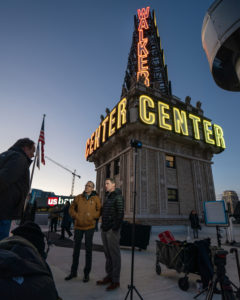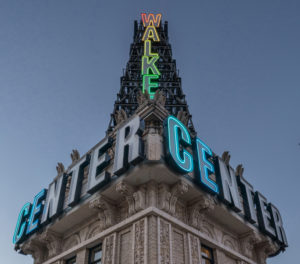YESCO, the 102-year-old company known for creating, repairing and  maintaining internationally recognizable signs, announces the fabrication, installation, and relighting of the historic Walker Center weather tower in Salt Lake City.
maintaining internationally recognizable signs, announces the fabrication, installation, and relighting of the historic Walker Center weather tower in Salt Lake City.
The 16-story Walker Center, formerly the Walker Bank building, was the tallest building between Chicago and San Francisco when it was completed in 1912. In the 1950s, YESCO installed a unique sign that flashed different neon colors to indicate the changing weather. For residents throughout the valley, it served as a highly visible weather forecaster for four decades. The weather tower was taken down in the 1980s due to a city ordinance but replaced in 2008.
The colors of the weather tower indicate the type of weather. Steady blue means clear skies, flashing blue means cloudy skies, steady red means rain and flashing red means snow. The tower will also change colors for the holidays and special occasions including pink for Breast Cancer Awareness month in October and Green for St. Patrick’s Day.
FUN FACTS:
- YESCO invested 902 man-hours into this project.
- The project encompasses 1,656 linear feet of LED lighting.
- The LED lighting system comes from YESCO’s supplier GLLS and has been uniquely designed with 17 pixels per foot.
- The program running the lighting system is called LED CTRL, which based in Australia.
- The system is capable of controlling every individual pixel. The program is only limited by the imagination and capabilities of the designer creating the programming.
- The project was completed using a portable winch and custom brackets fabricated by YESCO’s Victor Aguirre. The system lowered the letters down onto the roof so that YESCO could safely remove and dispose of the neon per EPA standards before raising them back up into place.
“This is one of the coolest projects we have done in my time at YESCO,” said Aaron Green, Rocky Mountain Region project manager, YESCO. “It is enormously gratifying to be able to work on a project with so much history and to know that Utahns can once again see their weather conditions indicated in lights.”










